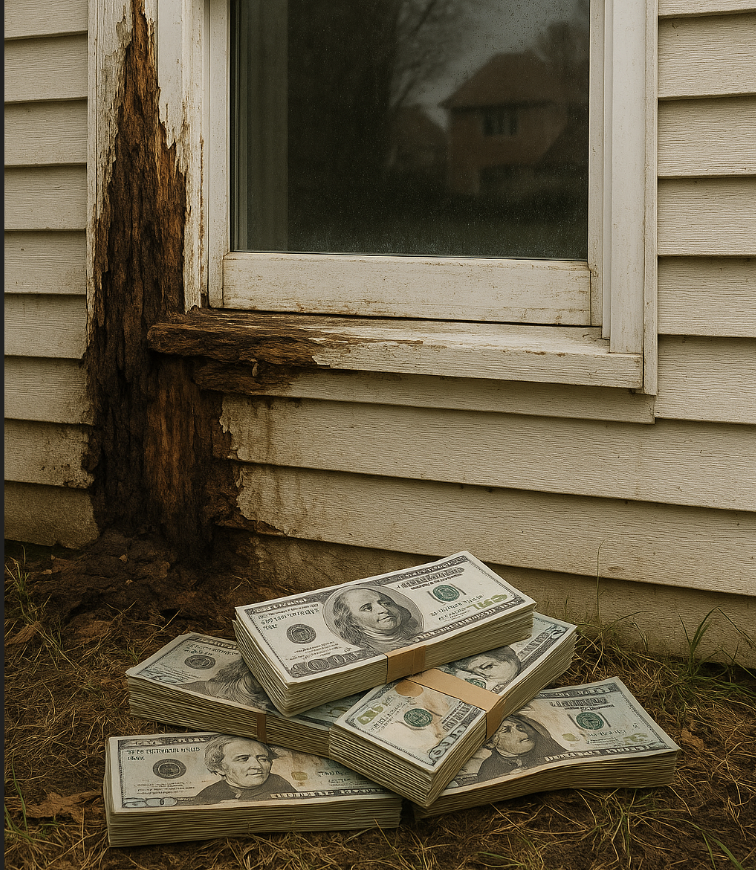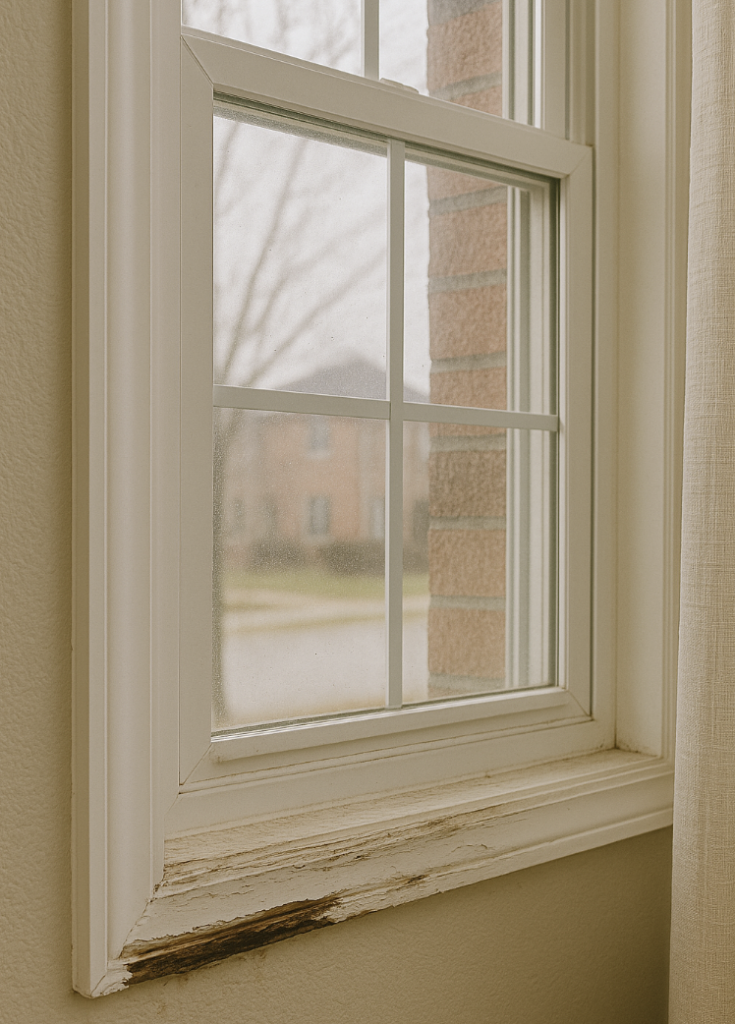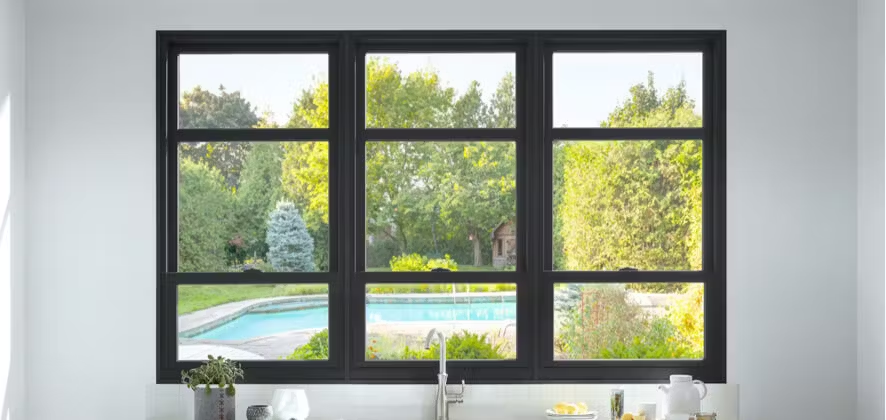New home window replacement can cut your heating and cooling costs by up to 13%. This substantial saving explains why Energy Star data shows that 43% of homeowners choose to upgrade their windows.
The right timing makes all the difference with window replacements. Your home’s comfort level improves with energy efficient windows that give you great returns. The average window project adds back 67.1% of its cost to your home’s value. These upgrades can boost your home’s resale value by $14,270 to $16,222. The signs that you need to call a window replacement company aren’t always clear. That’s why this piece will help you spot warning signs that need quick action.

Common Signs Your Windows Need Replacing
Your home’s windows play a big role to protect against the elements while keeping you comfortable and energy costs low. The best windows eventually show signs they need replacement. You can save money on repairs & bills by spotting these warning signs early.
Drafts or noticeable temperature changes
Your windows likely need replacement if you notice drafts. Cold spots and unexpected breezes near closed windows usually mean the airtight seal has failed. Your heating and cooling system works harder than it should, and your energy bills go up.
A quick test can confirm what you suspect. Hold a candle carefully near your window’s edges and watch the flame. Any movement shows you have air leaks. A tiny 1/8-inch gap around windows or doors lets in as much air as a half-open small window.

Condensation between window glass panes
Fog or moisture trapped between window panes that won’t wipe away means your double or triple-pane window’s seal has failed. The window’s insulating properties decrease once outside air and moisture get between the glass.
Double-pane windows typically last 10-20 years before things start breaking down. The trapped moisture can permanently damage your windows through “riverbedding” where water carves glass grooves, or “silica haze” that leaves white snowflake-like deposits.
Difficulty opening or closing windows
Sticky or jamming windows that need too much force aren’t just annoying – they could be dangerous in emergencies.
- Extra friction from dirt and debris buildup
- Springs or mechanisms that don’t work
- Swollen wood frames from moisture
- House settling that misaligns frames
Visible damage to frames or glass
Regular checks of your window frames can reveal chipping, wear, or water stains that might mean rot has set in. Damaged wood frames soak up moisture and swell, which throws off proper alignment.
Cracked glass and rotting frames make your home look bad and reduce security and insulation. These visible signs tell you it’s time to think over new windows before bigger problems develop.
When These Signs Mean You Should Act Fast
Some window problems can wait, but others just need quick attention to prevent damage that can get pricey. You can save thousands in repairs and protect your home’s structure if you know which warning signs require urgent action.

Water leaks or rot around the frame
Water infiltration around windows is a concern. You’re facing a major problem that needs attention if you notice moisture seeping through window frames or water stains on nearby walls. Leaking windows cause major structural and esthetic damage beyond the window itself.
Water that penetrates your home can affect the wall structure and lead to rot, mold growth, and compromised insulation. Your wooden frames have already started to decay significantly if they feel spongy or soft when pressed. Window frames become especially vulnerable to rot because rain and moisture collect around windows without proper flashing naturally.
- Water pooling on window sills during rain
- Discoloration or staining on walls near windows
- Soft, spongey wooden frames that yield to pressure
Sudden spikes in energy bills
Your windows might be failing if you notice a sudden increase in monthly energy costs. Poor windows create unnecessary strain on your heating and cooling system and end up shortening your equipment’s lifespan, even with new efficient systems.
High humidity levels inside your home, especially near windows, point to moisture problems that match energy inefficiency. These problems can lead to mold.
Broken locks or security issues
Alarms.org statistics show that burglars complete nearly 30% of break-ins without using force. Your window locks play a crucial role in home security.
Broken locks create more than security risks. Windows won’t seal properly and let drafts and moisture enter. This creates two problems… compromised safety and reduced energy efficiency. Windows that don’t close securely due to lock issues face more weather damage as they might open during storms.
A window replacement service should help these critical issues. Professional assessment helps determine if repairs will work or if complete window replacements for homes will protect your property value and family’s safety better.
How Delaying Window Replacement Can Cost You More
Delaying window replacements rarely makes financial sense. Drafty windows don’t just make your home uncomfortable, but they can also drain your wallet in several ways.

Increased heating and cooling costs
Your monthly utility bills show the direct hit from old windows right away. The U.S. Department of Energy estimates these inefficient windows let 30% of your home’s heating and cooling energy escape. You’re basically paying good money to heat and cool the outdoors. The waste adds up quickly for most households.
Here’s an example –> A $200 monthly energy bill means you waste about $60 through inefficient windows. That’s $720 every year. So basically, you could throw away $7,000+ in a decade. Easily. That money could go toward other home upgrades or investments.
New energy-efficient windows help right away. ENERGY STAR-qualified models cut energy bills by 12-15% each year. Some homeowners save up to $541 yearly after installing high-performance windows.
Structural damage from moisture
The biggest hit to your wallet comes from moisture sneaking in through bad windows. Water finds its way through leaky windows and attacks your frames and walls quietly.
- Wood rot in window frames and structural elements
- Mold and mildew growth, requiring professional remediation
- Weakened drywall and paint deterioration
- Compromised insulation effectiveness
These problems cost more than just repairs. American businesses spend about $9 billion yearly fixing moisture damage (cbo.gov). On top of that, moisture problems add roughly $3.5 billion to asthma-related medical costs nationwide.
Reduced home resale value
Old or damaged windows hurt your property’s market value. Buyers see outdated windows as a future expense and lower their offers.
The good news? Window replacement ranks among the smartest home improvements. Industry reports show an average ROI of 68-75%. Houses with energy-efficient windows tend to sell faster at better prices because buyers know they’ll save money long-term.
Homes with obvious window problems often get lower offers. Buyers subtract both replacement costs and extra money because they think the whole property might need work.

Choosing the Right Window Replacement Service
Picking the right professional for your home’s window replacements is just as significant as choosing quality windows. The quality of installation affects performance, so you need to think carefully about your contractor choice.
What to look for in a contractor
Experience in window installation should take priority over general contracting skills. Companies that are several years old usually prove more reliable. You should verify proper licensing and insurance (including liability coverage and workers’ compensation). This keeps you protected if accidents happen during installation.
Homes built before ‘78 need installers with lead paint safety training. The EPA has a database where you can find lead-safe certified contractors. Certification from respected organizations like the American Window and Door Institute or Installation Masters also matters.
Understanding warranties and certifications
Window warranties come in several forms—limited, lifetime, and transferable (and last 10-20 years). Manufacturers & installers provide separate warranties. Manufacturer warranties cover materials & components, while installation warranties protect against workmanship issues.
“Lifetime” warranties often have limitations. Look closely at exclusions and check if labor costs for repairs are included. Transferable warranties can add value to your home’s sale price since new owners can benefit from coverage up to 30 years.
Comparing quotes and materials
You should get multiple bids (63% of homeowners compare 3-4 estimates).
A complete quote needs to show
- Window specifications (brand, model, size, type)
- Material and labor costs (separately itemized)
- Installation process details
- Disposal of old windows
Watch out for unusually low bids—they often mean inadequate insurance coverage or poor materials. Make sure permits, disposal fees, and potential repairs to surrounding areas are included to avoid extra charges later.

Are You Ready For Home Window Replacement Services?
Your windows protect your home from harsh weather and help keep it comfortable. You can save thousands in potential damage and energy costs when you spot warning signs of failing windows early. Watch out for drafts, condensation between panes, windows that won’t open properly, and visible damage. Some issues are more urgent than others.
Water leaks & rot can’t wait and they just need immediate action before they cause serious structural damage. A sudden spike in your energy bills often points to window problems that quietly drain your wallet every month. Broken locks or frames create security risks that you should fix right away instead of using temporary solutions.
Putting off window replacement ends up costing way more than fixing problems early. You waste hundreds each year on lost energy alone. Moisture damage puts your home’s structure and air quality at risk. Your outdated windows also substantially lower your resale value since buyers factor replacement costs into their offers.
Contact Hearth & Home Specialties for more information if you’re in the Las Vegas, NV area.
Home Window Replacement Questions
What are the key signs that indicate I need to replace my windows?
Look for drafts, condensation between panes, difficulty opening or closing, visible damage to frames or glass, and sudden increases in energy bills. These are all indicators that your windows may need replacement.
How long does the window replacement process typically take?
The entire process, from ordering to installation, can take 4-15 weeks depending on factors like window style, size, and product availability. The actual installation of each replacement window usually takes 30-60 minutes.
What is the average cost to replace a single window?
Based on a recent survey, the average cost to replace a single window is about $554, with a typical range between $338 and $897. However, costs can vary depending on window type, size, and location.
How often should I consider replacing my home’s windows?
The average lifespan of residential windows is 15 to 30 years. While well-maintained windows can last beyond 20 years, it’s wise to start considering replacement as they approach the two-decade mark.
What are the benefits of replacing old windows?
Replacing old windows can reduce energy costs, improve home comfort, enhance curb appeal, increase property value, and provide better sound insulation. Energy-efficient models can cut heating and cooling bills by 12-15% annually.
